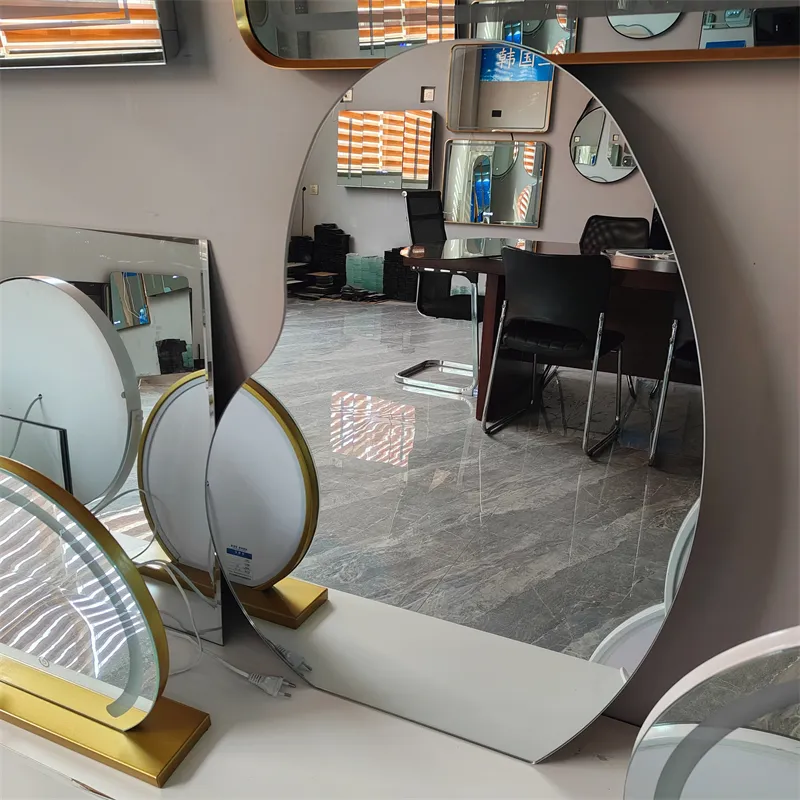Nov . 18, 2024 06:30 Back to list
sandblasted glass
The Art and Utility of Sandblasted Glass
Sandblasted glass, a unique form of textured glass, has emerged as a popular choice in architecture, interior design, and art. Utilizing a straightforward yet effective process, the technique involves propelling fine particles of sand at high velocity onto the surface of glass to create patterns, designs, or a frosted appearance. This innovative method combines both artistry and practicality, offering numerous benefits and applications.
The Process of Sandblasting
The sandblasting technique, sometimes referred to as abrasive blasting, employs a machine that generates a focused stream of air, mixed with sand or other abrasive materials. This mixture is directed at the glass surface, where it erodes specific areas, resulting in a frosted effect that can vary from subtle to bold depending on the intensity and duration of the blasting. Artists and manufacturers can create intricate designs, logos, or textures, giving sandblasted glass a distinctive edge over traditional glass finishes.
Versatility in Design
One of the primary advantages of sandblasted glass is its versatility. It can be produced in various styles, from simple geometric shapes to elaborate, custom artwork. The ability to control the depth and pattern of the sandblasting allows for endless creative possibilities. This versatility means that sandblasted glass can be tailored to fit the aesthetic requirements of residential homes, commercial spaces, and even public art installations.
In residential settings, sandblasted glass is commonly used for shower doors, room dividers, and windows. These applications not only provide privacy but also allow light to diffuse seamlessly, creating an inviting atmosphere. In commercial spaces, businesses often utilize sandblasted glass for branding purposes, incorporating logos and motifs into storefronts, office partitions, and conference rooms. The method enables a professional and stylish appearance while serving functional needs.
Privacy and Light Diffusion
sandblasted glass

One of the distinctive characteristics of sandblasted glass is its ability to provide privacy without sacrificing light. Unlike opaque materials, sandblasted glass allows natural light to filter through while obscuring visibility from the outside. This feature is particularly beneficial in urban environments where space is at a premium, and sunlight is needed to create a warm, welcoming ambiance. Bathrooms, bedrooms, and entryways are common areas where sandblasted glass can enhance both privacy and light.
Durability and Maintenance
Beyond its aesthetic appeal, sandblasted glass is also prized for its durability. The glass itself is typically tempered, making it more resistant to impact and thermal stress compared to regular glass. If properly maintained, sandblasted glass can last for many years without significant deterioration. Cleaning is relatively straightforward; the frosted surface can be wiped down with soft, non-abrasive cloths and gentle cleaning agents, ensuring it retains its appearance over time.
Environmental Considerations
In recent years, there has been a growing emphasis on sustainable practices in manufacturing and design. Sandblasted glass can contribute to eco-friendly initiatives in several ways. For example, it can be made from recycled glass, reducing waste and the demand for raw materials. Additionally, the use of natural sand or alternative sustainable abrasives minimizes environmental impact during production. These considerations are increasingly important for consumers who prioritize sustainability in their purchasing decisions.
Conclusion
Sandblasted glass stands out not only for its aesthetic versatility and functional benefits but also for its contribution to sustainability and durability. As an artistic medium, it transcends the limitations of traditional glass by embracing creativity while serving practical purposes. Whether it’s for enhancing privacy in a home, adding sophistication to a commercial space, or creating stunning artistic pieces, sandblasted glass continues to captivate architects, designers, and art enthusiasts alike. Its enduring appeal and multifaceted applications ensure that sandblasted glass will remain a sought-after material for years to come.
-
Safety and Style with Premium Laminated Glass Solutions
NewsJun.24,2025
-
Reinvents Security with Premium Wired Glass
NewsJun.24,2025
-
Premium Float Glass Line for Modern Architecture
NewsJun.24,2025
-
Low Emissivity Glass for Energy-Efficient Architecture
NewsJun.24,2025
-
High-Performance Insulated Glass Solutions for Modern Architecture
NewsJun.24,2025
-
Elevates Interior Style with Premium Silver Mirror
NewsJun.24,2025
Related PRODUCTS














